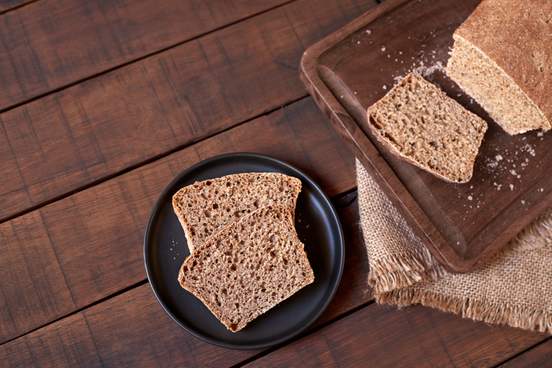
Anadama bread
Definition: a leavened bread made with flour, cornmeal, and molasses
No one knows for sure where the anadama in anadama bread came from, but several theories over the years, including one in The Yankee Cook Book by Imogene B. Wolcott (1939), suggest some combination of damn and Anna, as in “damn Anna’s bread” or “Anna damn her!” However, alternate names include amidama, amadama, ammy dammy, yami-dami, among others, so make of this what you will. What is certain is that the name and style of this yeasted bread, which usually features some ratio of cornmeal and flour (wheat and sometimes rye) and molasses, originated in New England.
When I stopped by her neighbor’s house to buy raw milk, Guy Goodrich and his wife, Dorothy, welcomed my interest in their bantam hens as long as I wasn’t interrupting Dorothy’s TV soap operas. From them and others, I learned how to can vegetables, make anadama bread, elderberry wine, and crock pickles. There were even a few who asked about marijuana. For, curious as I was about their way of life, it turned out they were also interested in what they assumed was mine.
—Yvonne Daley, Going Up the Country: When the Hippies, Dreamers, Freaks, and Radicals Moved to Vermont (2020)
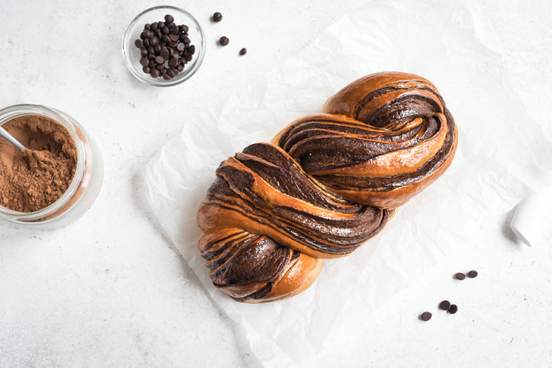
Babka
Definition: a sweet bread made with yeast and butter
The word babka has been borrowed into language twice, from two separate languages. The Yiddish babke gave us the babka that refers to a sweet bread containing a filling (such as chocolate, cinnamon, or poppy seeds), and that is typically rolled and twisted before baking in a loaf pan, and sometimes topped with streusel. The Polish-derived babka refers to a sweet bread that contains dried fruit (such as raisins), is baked in a round cake pan with scalloped sides, and is often topped with syrup, icing, or confectioners’ sugar. Both babke and babka, in their respective languages, share a literal meaning of “old woman” or “grandmother.”
These days babka has taken on a life of its own—coveted by foodies, reinterpreted by chefs and bloggers all over the United States. I have seen every variety of babka from sweet matcha and black sesame babka to savory pulled brisket babka.
— Shannon Sarna, Modern Jewish Baker: Challah, Babka, Bagels & More (2017)
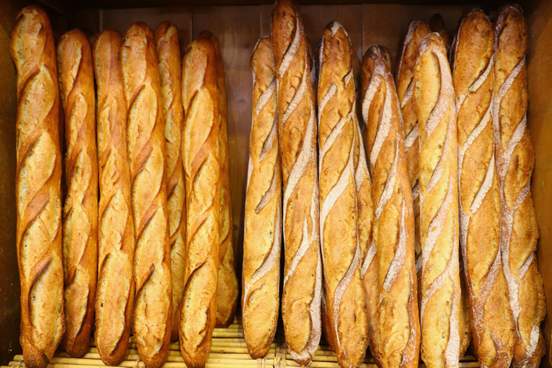
Baguette
Definition: a long thin loaf of French bread
Baguette, like many words of French origin, has a decidedly elegant, sophisticated, cosmopolitan flair in English. “I’m headed to market to buy a baguette!” Ooh la la. Its literal meaning in French, however, is simply “rod” or “stick,” owing to the loaf’s long, thin shape. “Honey I’m going to the store to pick up a rod” just doesn’t have the same ring, though.
At that time, the baguette defined bread for me and I saw no reason why I shouldn’t try to bake it, even as a beginner. This isn’t unusual. Many novices start out with this iconic loaf. And that’s where the trouble begins, because it’s the equivalent of wanting to knock out a Beethoven sonata when you sit down at the piano for the first time.
— Samuel Fromartz, In Search of the Perfect Loaf: A Home Baker’s Odyssey (2014)
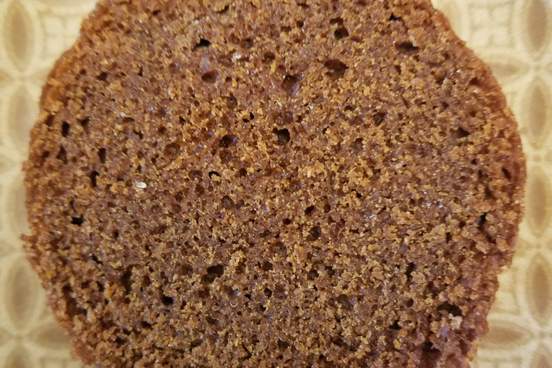
Boston brown bread
Definition: a dark brown steamed bread made usually of cornmeal, white or whole wheat flours, molasses, soda, and milk or water
The pride of New England, where it is generally referred to simply as brown bread, Boston brown bread is a quick bread that is often purchased canned (with or without raisins), but recipes abound for steaming your own—either in cans or regular ol’ loaf pans. We swear it’s wicked good.
Boston brown bread is today’s descendent of Rye and Indian. Modern recipes use baking soda and baking powder for leaven, a mixture of rye, wheat, and cornmeal, and a hefty dose of molasses. For a time, it was cooked in a coffee can, but the principle is the same: the dense bread is steamed, just as in the days when Dutch ovens were a primary means of cooking over an open flame.
— Eric Pallant, Sourdough Culture: A History of Bread Making from Ancient to Modern Bakers (2021)
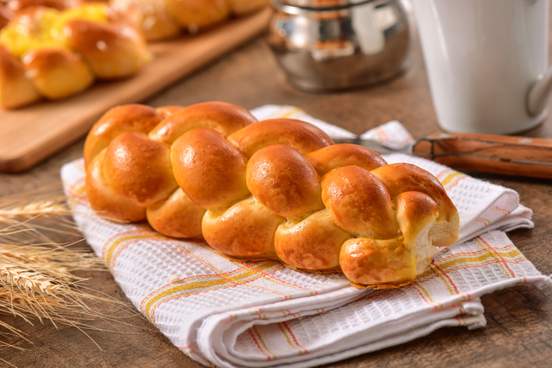
Brioche
Definition: light slightly sweet bread made with a rich yeast dough
Brioche is—unlike, say, beans—not a foodstuff one associations with, er, windiness, but lo and behold there is a (possible) etymological connection to an Old Irish fart word. Brioche, which was borrowed from French in the early 1800s, shares roots with the Old High German word brehhan, meaning “to break.” Brehhan, in turn, traces back to the Indo-European *bhreg- (“to violently separate”), making it potential kin, according to etymologists, of the Old Irish braigid, meaning “s/he farts, breaks wind.”
Next, divide the brioche slices between the prepared sheets, leaving a few inches of space between them. Use a pastry brush to moisten each with a little of the syrup, then slather on a few generous tablespoons of the frangipane, using an offset palette knife to smooth it out almost to the edges.
— Thalia Ho, Wild Sweetness: Recipes Inspired by Nature (2021)
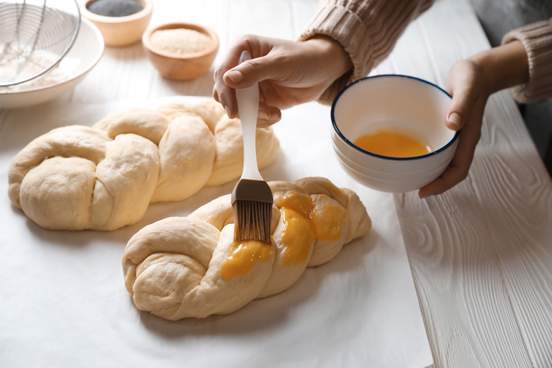
Challah
Definition: egg-rich yeast-leavened bread that is usually braided or twisted before baking and is traditionally eaten by Jews on the Sabbath and holidays
When English speakers first borrowed challah from Yiddish, they couldn't quite settle on a single spelling, so the word showed up in several forms; challah and hallah, and the plural forms challot, challoth, challahs, hallot, halloth, and hallahs were all common enough to merit inclusion in Webster's Third New International Dictionary, Unabridged when it was released in 1961. Today, challah and the anglicized plural challahs are the variants that are usually encountered by English speakers. The initial ch of challah is frequently pronounced as a velar or uvular fricative, like the ch in the German Buch or the Scottish English loch.
[Dolly] Meckler returned to New York, where she found a bakery, Partybus Bakeshop, on the Lower East Side, to take on the day-to-day bread-making, allowing her to focus on her broader mission: incorporating challah—which is Eastern European in origin, and plays a ceremonial role in Ashkenazi Jewish culture-into the mainstream.
— Hannah Goldfield, The New Yorker, 24 May 2021
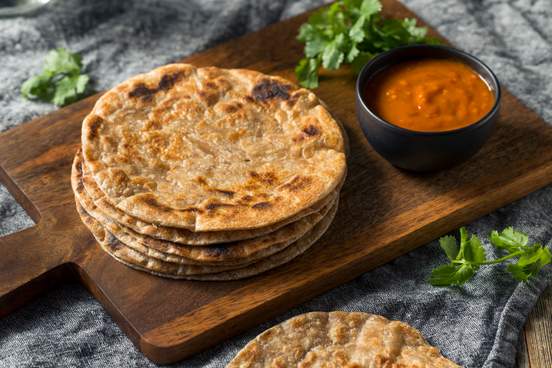
Chapati
Definition: a round flat unleavened bread of India that is usually made of whole wheat flour and cooked on a griddle
Chapati is a type of flatbread, meaning it is thin with a wide surface. Some flatbreads—such as focaccia and naan, also on this list—are leavened with yeast, but others, like chapati, are unleavened and generally thinner. Chapati first entered English in the early 1800s, and has two sources: the Hindi capāti and Urdu chapātī.
Chapati is the everyday bread of North India. The flatbread is made with atta, or durum wheat flour. To eat chapatis, you pull a little piece off with one hand and encase a bit of curry or lentils in it before putting it in your mouth.
— Chitra Agrawal, Vibrant India: Fresh Vegetarian Recipes (2017)

Ciabatta
Definition: a flat oblong bread having a moist interior and a crispy crust
Eating a slipper doesn’t sound all that appetizing (unless you’re a dog! rim shot!), but when you sink your teeth into a slice of ciabatta, that’s what you’re doing—lexically, that is. Ciabatta, translated from Italian, means, literally “slipper.” The bread is so-named due to the shape of its loaf. Ciabatta’s first-known use in English came in 1985. If its relative recency surprises you, you may be interested to learn that the bread was first baked only three years prior in 1982, by a Italian baker named Arnaldo Cavallari, in response to the growing popularity of the French baguette.
What motivates the people of the Lake Como area, for example, to persist in making their beloved ciabatta, a slipper-shaped bread that foments my exasperation throughout the entire process? Ciabatta, which begins innocently enough with a little yeast, flour and warm milk, soon becomes brave and billowy. Clearly, it is the spoiled brat of breads.
— Jeannette Ferrary, The New York Times, 14 Jan. 1987
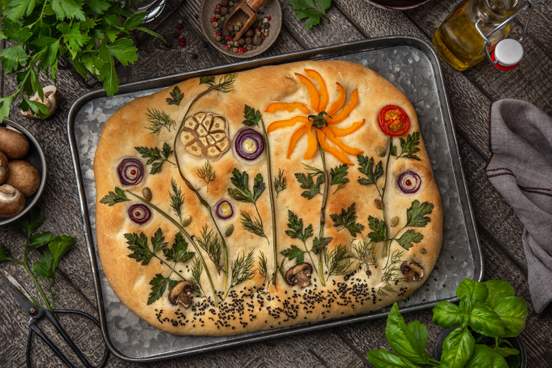
Focaccia
Definition: a flat Italian bread typically seasoned with herbs and olive oil
While the origins of ciabatta are fairly recent, focaccia’s are ancient, as its name attests. The focus of focaccia is the hearth—the word traces back to the Latin word focus, meaning “hearth,” the area in front a fireplace where focaccia was traditionally cooked for millennia. While focaccia can be fairly simple and seasoned simply with herbs and oils, creative bakers have been known to decorate their bread with these and other ingredients to make edible works of art.
I was once a pastry chef managing the bread program at two Brooklyn restaurants. … A meal at both restaurants started with a complimentary freshly baked loaf: At one, it was a crusty round of focaccia with whipped ricotta…
— Sohla El-Waylly, Start Here: Instructions for Becoming a Better Cook (2023)
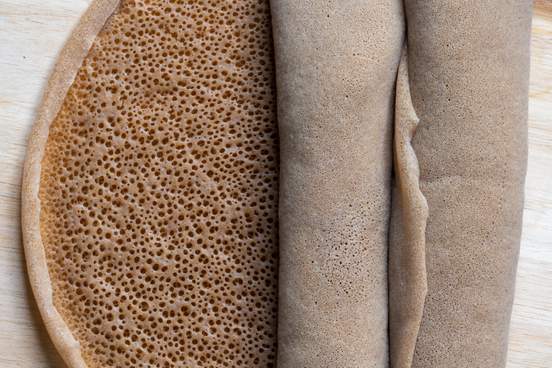
Injera
Definition: a flat spongy bread made of fermented teff flour
If you’re unfamiliar with teff, it’s an annual cereal grass native to Ethiopia and Eritrea grown for its tiny, nutritious seeds. Teff is an ancient crop and was likely domesticated more than 6,000 years ago in Ethiopia, which is the major center of the plant’s diversity. Teff flour is used to make injera, a soft flatbread that is a staple of Ethiopian cuisine. The word injera was first used in English in the late 1800s and comes from the Amharic ənǰära.
In order to develop the elasticity needed to make spongy injera, the batter has to be fermented. With a sourdough-like starter, it is left to ferment for three days before an additional step called ‘absit’ happens. Absit is a distinctive Ethiopian cooking technique that requires boiling some of the batter then, while hot, stirring it back into the initial starter.
— Yohanis Gebreyesus, Ethiopia: Recipes and Traditions from the Horn of Africa (2019)
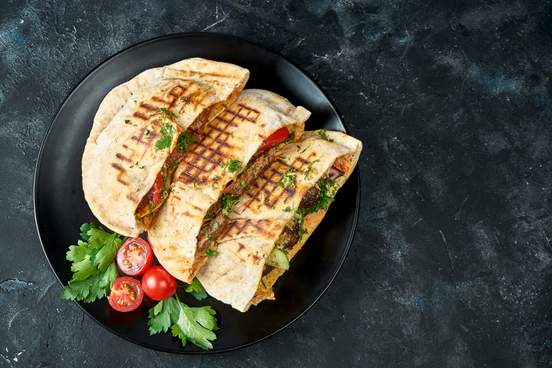
Pita
Definition: a thin flat bread that can be separated easily into two layers to form a pocket
Pita is thought to be one of the oldest types of breads in the world—evidence suggests it has been baked in the Middle East for thousands of years. The word pita comes from Greek, where it can be used to mean “pie,” “bread,” or “cake.” Pita has been part of the English language since the 1930s, but an etymologically different pita entered centuries ago from Spanish and Portuguese, referring to the fiber yielded by several different plants, including agaves, and also to the plants themselves.
Homemade pita is more rustic and slightly thicker than the traditional, very thin Lebanese pita that’s made so by special equipment in a professional bakery. That exact thinness just can’t be achieved at home—I am assured by every professional pita baker I’ve known, and by my own countless not-so-thin attempts. Still, it’s a lot of fun to watch your own pita puff up in the oven, and to enjoy it fresh and warm at home from your own hands.
— Maureen Abood, Rose Water and Orange Blossoms: Fresh & Classic Recipes from My Lebanese Kitchen (2015)
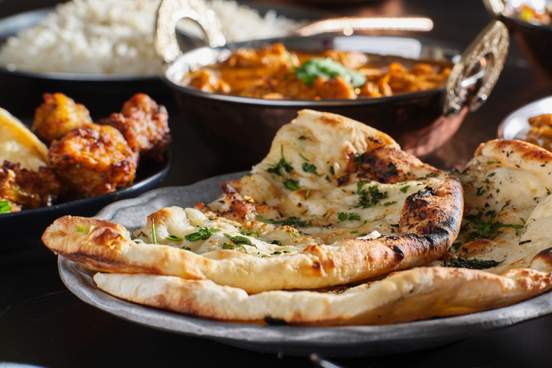
Naan
Definition: a round flat leavened bread especially of the Indian subcontinent
Like chapati, the word naan comes from both Hindi and Urdu languages, which share the word nān, meaning “bread” (it traces further back to Persian). Unlike chapati, naan is leavened, typically with yeast, producing a puffier appearance and fluffier texture. Traditionally, naan is cooked in a tandoor, a cylindrical, coal-fired clay oven.
Plain naan is very easy and quick to make, but adding a filling turns it into a complete meal, such as this naan stuffed with minced chicken that has been cooked in a lovely blend of spices.
— Chetna Makan, The Cardamom Trail: Delicious Bakes Inspired by India (2021)
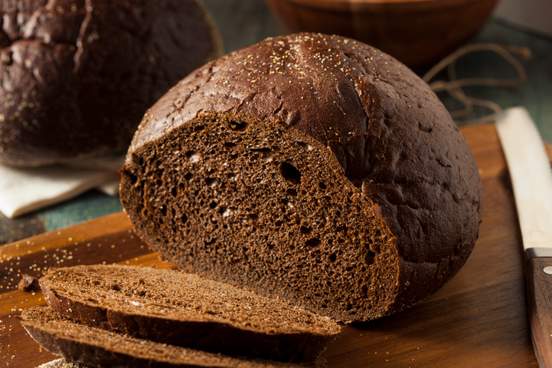
Pumpernickel
Definition: a dark coarse sourdough bread made of unbolted rye flour
Look, we’re just gonna cut the cheese to the chase: Pumpernickel comes from the German words pumpern (“to break wind”) and Nickel (“goblin”), apparently due to the bread’s indigestibility. Do what you will with this information.
Brotzeit literally means “bread time,” but there’s much more to this German tradition than a few buddies splitting a loaf of pumpernickel.
— Jeremy & Jessica Nolen, New German Cooking: Recipes for Classics Revisited (2015)

Quick bread
Definition: bread made with a leavening agent (such as baking powder or baking soda) that permits immediate baking of the dough or batter mixture
The advent of commercial baking powder in the latter half of the 19th century led to the use (first recorded in the early 1880s) of quick bread. The reason for the moniker is no mystery—using a leavening agent other than yeast cuts down the time between the kneading and the eating. It’s a quick (ahem) way to distinguish breads leavened with baking powder or soda from yeasted breads and breads that aren’t leavened at all.
A good loaf pan will evenly brown quick breads, such as banana bread, as well as yeast breads.
— Cook’s Illustrated Baking Book (2018)
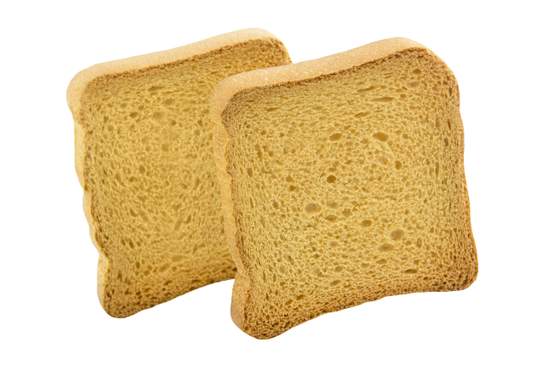
Zwieback
Definition: a usually sweetened bread enriched with eggs that is baked and then sliced and toasted until dry and crisp
In ages past, keeping food fresh for any length of time required a lot of ingenuity, especially when one needed to carry comestibles on a long journey. One of the solutions people came up with for keeping bread edible for traveling was to bake it twice, thereby drying it and slowing the spoiling process. The etymology of zwieback reflects this baker’s trick; it was borrowed from a German word that literally means “twice baked.” Nowadays, zwieback is not just used as a foodstuff—the texture of the dried bread makes zwieback a suitable teething device for infants. Incidentally, other twice-baked goods whose origins reflect that fact include biscuit and biscotti, both of which come from phrases meaning “twice-cooked bread.”
In preparation for departure, first in the nineteenth century, and then in the 1920s and 1940s, Mennonite women backed hundreds of zwieback and roasted them for the journey. When roasted properly, thoroughly dried out, and cooled, they can last for several months without turning rancid.
— Marlene Epp, Eating Like a Mennonite: Food and Community Across Borders (2023)





